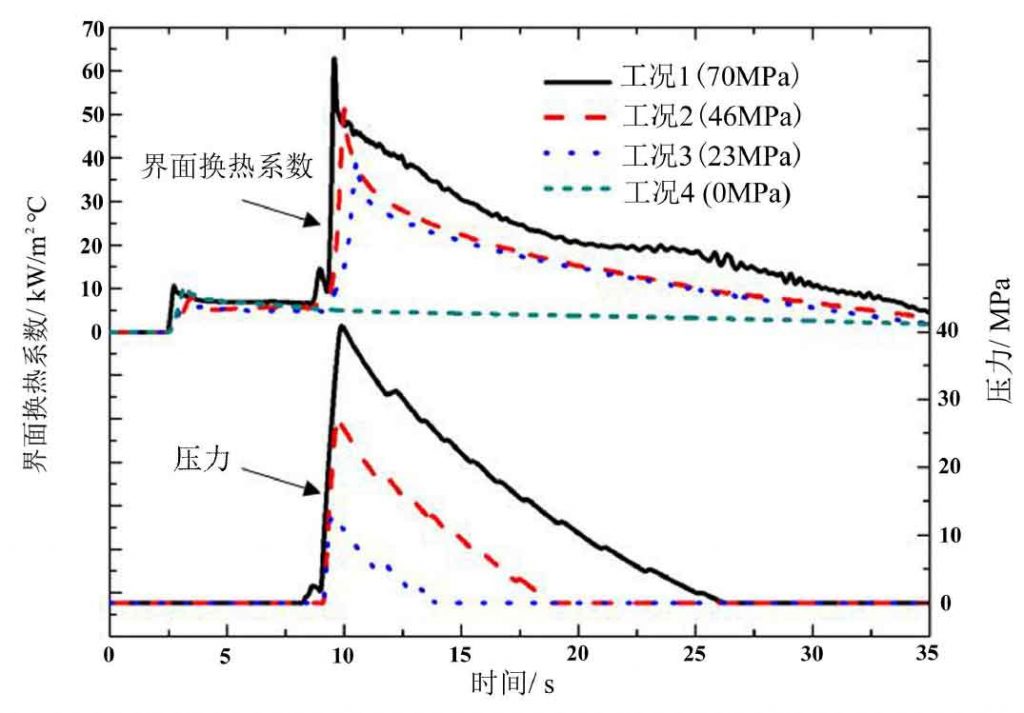Direct squeeze casting was used in squeeze casting experiment. In the process of direct squeeze casting, the high temperature melt is poured into the mold, and then the punch is pressed down, and the punch acts on the whole casting. It takes about 4-5s from the time when the punch is pressed down to the time when it completely acts on the casting, which means that the effect of pouring on the interface heat transfer and the effect of external pressure on the interface heat transfer coefficient can be studied separately.
As shown in Fig. 1, when the high temperature melt is poured into the mold cavity, the peak value of the interfacial heat transfer coefficient varies greatly, and then the interfacial heat transfer coefficient decreases to a low level and remains almost unchanged until the applied pressure acts on the casting. Therefore, the effect of pouring on the interface heat transfer under pressure should begin after the pressure is applied.
As shown in Figure 2, it is the influence of pouring temperature on the average interface heat transfer coefficient after pressing. It can be seen that although the average value of interface heat transfer coefficient fluctuates greatly under specific working conditions, the overall change trend shows that the influence of different pouring temperature on the average value of interface heat transfer coefficient is very small, almost no change.
As shown in Fig. 3 and Fig. 4, the effect of pouring temperature on the peak value of interfacial pressure and the action time of interfacial pressure is shown. It can be seen from the figure that the effect of pouring temperature on them is almost negligible. This is mainly due to the direct squeeze casting process. The external pressure is applied to the casting after pouring for a period of time, and the effect of pouring temperature on the subsequent process is very small.




